Larfiks 30s 8 mg coated tablets
$17.20
Description
Trade name
ЛАРФИКС®
the International unlicensed
name Lornoksikam Lekarstvennaya
the Tablet form, coated 4 mg and 8 mg
Structure
One tablet contains
active agent – to lornoksika of 4 mg or 8 mg,
excipients: lactoses monohydrate, cellulose microcrystalline, povidone, sodium of a kroskarmelloz, magnesium stearate, opadry white 03F58750. *
* opadry white 03F58750: talc, polyethyleneglycol, a hydroksipropilmetiltsellyuloz, the titan dioxide (E 171)
the Description
of the Tablet, coated, oblong, an oval form, from white till yellowish color, smooth on both sides (for a dosage of 4 mg) Tablets, coated, oblong, an oval form, from white till yellowish color with stamping of L8 on the one hand and smooth on the other hand (for a dosage of 8 mg)
Pharmacotherapeutic group
Anti-inflammatory and antirheumatic drugs. Non-steroidal anti-inflammatory drugs. Oksikama. Lornoksikam.
The ATX M01A C05 code
the Pharmacological
Lornoksikam Pharmacokinetics properties is quickly and almost completely soaked up from digestive tract. Reaches the maximum concentration in plasma (Cmax) in 1–2 hours after administration of drug. The absolute bioavailability of a lornoksikam is 90–100%. The effect of the first passing was not observed. Average elimination half-life makes 3–4 hours.
Lornoksikam is in plasma in not changed look and in the form of its hydroxylated metabolite. Hydroxylated metabolites do not show pharmacological activity. Linking with proteins of plasma of a lornoksikam makes 99% and does not depend on concentration. Lornoksikam is metabolized completely, and about 2/3 is brought through a liver and 1/3 through kidneys as inactive substances.
Lornoksikam is metabolized by cytolame P450 2C9. Due to the genetic polymorphism of the fast and slow metabolizator existing for this drug which can lead to substantial increases of level of a lornoksikam at slow metabolism. The concomitant use of a lornoksikam with food reduces Cmax approximately by 30%. Tmax increases from 1.5 to 2.3 o’clock. Absorption of a lornoksikam (calculated on AUC) can be reduced up to 20%. The concomitant use with antacids does not influence pharmacokinetics of a lornoksikam. At elderly patients the clearance decreases on 30 to 40%. In addition, the reduced clearance, does not make significant changes to a kinetic profile of a lornoksikam at patients of advanced age or at patients with slight hepatic or renal dysfunction.
The pharmacodynamics
Lornoksikam – non-steroidal anti-inflammatory drug with analgetic and anti-inflammatory properties, belongs to a class of oksikam. The mechanism of action of a lornoksikam is partially based on inhibition of synthesis of prostaglandins (cyclooxygenase inhibition). The inhibition of cyclooxygenase does not lead to increase in formation of leukotrienes. The mechanism of the anesthetizing action of a lornoksikam as well as other NPVP, it is still not completely defined.
Indications
– short-term treatment is moderate or a significant pain syndrome
the Route of administration and doses
of the Tablet Larfiks® accept before food, washing down with water.
At moderately or significant pain syndrome the dose of 8-16 mg a day divided into 2–3 receptions is recommended.
In inflammatory and degenerative rheumatic diseases the initial dose of 12 mg divided into 2–3 receptions is recommended.
The maximum daily dose should not exceed 16 mg a day.
The daily dose and duration of therapy are defined individually, depending on character and a course of the disease.
Dose adjustment is not required from patients of advanced age (65 years are more senior), but it is necessary to use with care the drug Larfiks® in connection with the probability of emergence of side reactions from digestive tract.
For patients with moderate and heavy degree of a renal failure, heavy degree of a liver failure the recommended daily dose makes 12 mg which is divided into 2–3 receptions.
Side effects
It is considered that approximately 20% of patients can have by-effects. The most frequent side reactions which are the general for all other non-steroidal anti-inflammatory drugs are connected with disturbances of a digestive tract: gastrointestinal ulcers with perforation of intestines which can be heavy, nausea, vomiting with blood, diarrhea, a meteorism, a constipation, dyspepsia, an abdominal pain, a melena, a stomacace, exacerbation of colitis and Crohn’s disease. Gastritises were less often observed.
At use of the drug Larfiks® there can be following undesirable effects:
– often ( 1/100, 1/10) – a slight short-term headache, dizziness, nausea, an abdominal pain, dyspepsia, diarrhea, vomiting,
– sometimes ( 1/1,000, 1/100) – loss of appetite, change of body weight, an insomnia, a depression, conjunctivitis, vertigo, a ring in ears, heartbeat disturbance, tachycardia, hypostases, a liquid delay, heart failure, face reddening, rhinitises, a constipation, a meteorism, an eructation, dryness in a mouth, gastritises, stomach ulcers and a duodenum, abdominal pain, bleeding of gums, a stomacace, increase in level of liver enzymes (ALT, nuclear heating plant), rashes, an itching, the increased sweating, erythematic rashes, urticaria and a Quincke’s disease, an alopecia, an arthralgia, an indisposition, a face edema,
– seldom ( 1/10,000, 1/1,000) – pharyngitises, anemia, thrombocytopenia, an eosinophilia, a leukopenia, coagulation disturbance, a pancytopenia, reactions of hypersensitivity, a fever, a fever, anaphylactoid reactions, an anaphylaxis, a hyponatremia, concern, consciousness disturbance, hyperexcitability, disturbance of ability to concentrate, changes of attention, cognitive disorders, drowsiness, paresthesias, a dysgeusia, a tremor, migraine, a hyperkinesia, a hypesthesia, disorders of vision, including misting of sight, disturbance of color perception, defects of fields of vision, scotoma, an amblyopia, a diplopia, an iridocyclitis, arterial hypertension, inflows, krovopriliva, a vasculitis, hematomas, dispnoe, cough, a bronchospasm, a melena, vomiting with blood impurity, stomatitis, an esophagitis, a gastroesophageal reflux disease, a dysphagy, aphthous stomatitis, a glossitis, perforation of round ulcers, hemorrhoids, gastrointestinal bleedings, dermatitis, eczema, makulopapulezny rash, a purpura, feeling of an ostealgia and to a back, muscular spasms, weakness of muscles, myalgia, a synovitis, a nocturia, urination disturbance, increase in level of urea nitrogen and creatinine in blood, an asthenia.
– very seldom (1/10,000) – the ecchymoma, aseptic meningitis at patients with a system lupus erythematosus and the mixed diseases of connective tissue, toxic action on a liver therefore development of a liver failure, hepatitis, jaundice, a cholestasia is possible, swelled also bullous reactions, changes of nails, psoriasis, a multiformny erythema, Stephens’s syndrome – Johnson, a toxic epidermal necrolysis, to lornoksika can cause an acute renal failure in patients with already existing diseases of kidneys.
Contraindications
– hypersensitivity to a lornoksikam or to drug components
– pregnancy and the period of a lactation
– children up to 18 years
– thrombocytopenia
– hypersensitivity (the symptoms similar to that in bronchial asthma, rhinitis, a Quincke’s disease or a small tortoiseshell) to other non-steroidal anti-inflammatory drugs, including acetylsalicylic acid
– a severe form of heart failure
– gastrointestinal bleedings, cerebral and vascular bleedings or other hematologic disturbances
– the gastrointestinal bleedings or perforation in the anamnesis connected with the previous intake of non-steroidal anti-inflammatory drugs
– an active round ulcer or a recurrence of a round ulcer / bleeding in the anamnesis (two or more proved episode of developing of an ulcer or bleeding)
– a severe form of a liver failure
– a severe form of a renal failure (level of serumal creatinine & gt, 700 µmol/l)
Medicinal interactions
– Cimetidinum: increase in concentration of a lornoksikam in blood plasma (interaction between lornoksikamy both ranitidine or lornoksikamy and antacids is not revealed)
– Anticoagulants: non-steroidal anti-inflammatory drugs can increase effect of anticoagulants (for example, warfarin, an anisindion, a dikumarol, a fenedion) that leads to increase in a bleeding time
– Fenprokoumon: the efficiency of treatment fenprokoumony decreases.
– Heparin: non-steroidal anti-inflammatory drugs increase risk of developing of a spinal / epidural hematoma at simultaneous use with heparin during spinal or epidural anesthesia
– APF Inhibitors: can reduce effect of APF inhibitors
– Diuretics: easing of diuretic and hypotensive effect of loopback, thiazide and kaliysokhranyayushchy diuretics.
– Blockers of beta adrenoceptors: decrease in hypotensive effect.
– Blockers of receptors of angiotensin II: decrease in hypotensive effect.
– Digoxin: decrease in renal clearance of digoxin.
– Corticosteroids: the increased risk of developing of gastrointestinal ulcers and bleedings.
– Antibacterial drugs of group of a hinolon: the risk of emergence of the epileptic phenomena increases.
– Antithrombocytic drugs: the risk of developing of gastrointestinal bleedings increases.
– Other NPVP: the risk of developing of gastrointestinal bleedings increases.
– Methotrexate: the increase in concentration of a methotrexate in blood serum leading to increase in its toxicity. At simultaneous use the careful monitoring is necessary.
– Inhibitors of the return serotonin reuptake: the increased risk of developing of gastrointestinal bleedings.
– Lithium drugs: non-steroidal anti-inflammatory drugs can lower renal clearance of lithium with further increase in its concentration in blood serum. It is necessary to control lithium level in blood serum, especially in an initiation of treatment, at dose adjustment and the termination of treatment.
– Cyclosporine: increase in concentration of cyclosporine in blood serum, is possible increase in nephrotoxicity of cyclosporine. At combination therapy it is necessary to control function of kidneys.
– Sulphonylurea derivatives (for example, glibenclamide): the hypoglycemic effect can amplify.
– Lornoksikam (as well as other NPVP which are exposed to metabolism with CYP2C9 cytochrome participation) interacts with the known inductors and CYP2C9 inhibitors of isoenzymes (for example, with Tranylcyprominum and rimfamitsiny).
– Takrolimus: combined use of NPVP and takrolimus can increase risk of nephrotoxicity owing to weakening of synthesis of prostacyclin in kidneys. At such combination therapy it is necessary to control carefully function of kidneys
– Pemetreksed: NPVP can reduce renal clearance of a pemetreksed owing to what the renal and gastrointestinal toxicity increases, myelosuppression
Special instructions
Patients with a renal failure (level of serumal creatinine of 150-300 µmol/l) and a moderate renal failure (level of serumal creatinine of 300-700 µmol/l) should appoint drug only after careful assessment of the expected advantage of therapy and possible risk. In case of deterioration in function of kidneys the drug treatment should be stopped.
Patients after extensive surgical interventions, with heart failure, taking diuretics or the drugs which can lead to injury of kidneys, need to control function of kidneys carefully.
Careful clinical inspection and assessment of laboratory indicators (for example, partial thrombin time) is recommended to patients with disturbance of blood clotting as to lornoksika oppresses aggregation of thrombocytes, increasing blood clotting time.
Patients with a liver failure (for example, with cirrhosis) after use of drug in a dose of 12-16 mg a day are recommended to carry out laboratory tests in connection with a possibility of accumulation of a lornoksikam in an organism (increase in AUC). However deviations of pharmacokinetic parameters at patients with a liver failure in comparison with healthy volunteers are not revealed.
At long-term treatment (over 3 months) it is recommended to carry out the assessment of a condition of blood (hemoglobin definition), functions of kidneys (creatinine definition) and liver enzymes.
Patients of advanced age (65 years are more senior) are recommended to watch function of kidneys and a liver and with care to use drug after surgical interventions.
It is necessary to avoid combined use of a lornoksikam with other NPVP, including with selection inhibitors of cyclooxygenase-2.
Undesirable reactions can be minimized if to accept the lowest effective dose of drug.
During use of NPVP the developing of gastrointestinal bleedings, ulcers and perforation which can have a lethal outcome is possible. Patients with the ulcers in the anamnesis complicated by bleedings or perforation and also the patient of advanced age should begin with extra care drug treatment in the lowest therapeutic doses.
It is necessary to apply with care Larfiks® to treatment of the patients taking the drugs increasing risk of developing of ulcers and bleedings (see the section Medicinal Interactions).
For patients who need joint therapy the treatment can be carried out against the background of a concomitant use of inhibitors of a proton pomp and to carry out careful monitoring.
At patients of advanced age the risk of emergence of side reactions increases during use of NPVP, in particular gastrointestinal bleedings and perforation. At emergence of any side reactions from a digestive tract it is necessary to stop administration of drug and to see a doctor.
Follows with care and after the careful analysis to use drug to patients with arterial hypertension and/or heart failure as owing to reception of NPVP hypostases and a delay of liquid in an organism are possible.
To patients with uncontrollable arterial hypertension, stagnant heart failure, coronary heart disease, cerebrovascular disturbances and also to patients with the increased risk factors warmly – vascular diseases (arterial hypertension, a lipidemia, diabetes, smoking) it is necessary to begin treatment after the careful analysis.
Combined use of NPVP and heparin increases risk of a spinal / epidural hematoma at spinal or epidural anesthesia.
Due to the reception of NPVP, especially in an initiation of treatment, serious side reactions from skin were in rare instances noted, including exfoliative dermatitis, Stephens’s syndrome – Johnson and a toxic epidermal necrolysis. Drug treatment needs to be stopped at the first symptoms (skin rashes, damages of mucous membranes and other symptoms of hypersensitivity).
Patients with bronchial asthma, including in the anamnesis, should apply NPVP as there are cases of development of a bronchospasm with care.
At patients with a system lupus erythematosus and the mixed diseases of connective tissue the risk of developing of aseptic meningitis increases.
Lornoksikam oppresses aggregation of thrombocytes, increasing blood clotting time. The patients having tendency to bleedings should appoint drug with care.
Joint purpose of NPVP and takrolimus can increase risk of nephrotoxicity owing to weakening of synthesis of prostacyclin in kidneys. At such combination therapy it is necessary to control function of kidneys carefully.
As well as incidental increase in transaminases, bilirubin in blood serum and also increase in concentration in blood of urea and creatinine can cause other NPVP, Larfiks®. If deviations of laboratory indicators essential also proceed a long time, treatment it is necessary to stop and perform necessary examination.
The patients having rare hereditary intolerance of a galactose, a lactose intolerance or disturbance of absorption of glucose galactose should not use drug.
Lornoksikam, as well as other drugs oppressing cyclooxygenase synthesis can weaken fertility. It is not recommended to apply to women who plan pregnancy.
Patients with chicken pox should not use drug.
The feature of influence of medicine on ability to run the vehicle or potentially dangerous mechanisms
in case of developing of dizziness and/or drowsiness after administration of drug should not run motor transport or to work with other mechanisms.
Overdose
Symptoms: nausea, vomiting, cerebral symptoms (dizziness, a disorder of vision), the ataxy passing into a coma and spasms are possible changes of function of a liver and kidneys, disturbances of blood clotting.
Treatment: symptomatic
does not give in to Dialysis. There is no specific antidote. Gastric lavage is recommended. Use of activated carbon on condition of its reception right after overdose of the drug Larfiks® can reduce drug absorption.
Forms of release and packing
On 10 tablets place in blister strip packaging.
On 3 or 10 blister strip packagings together with the instruction for medical use in the state and Russian languages place in cardboard packing.
To Store storage conditions in the dry, protected from light place, at a temperature not above
25ºС.
To store out of children’s reach!
2 years
not to use a period of storage after the termination of the expiration date specified on packing.
To Develop prescription status According to the prescription
Additional information
| Ingredient |
|---|





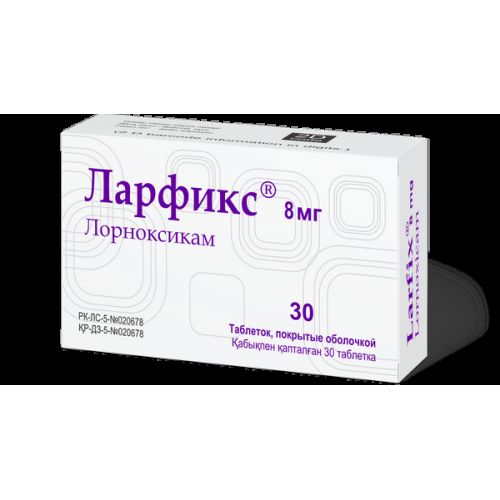
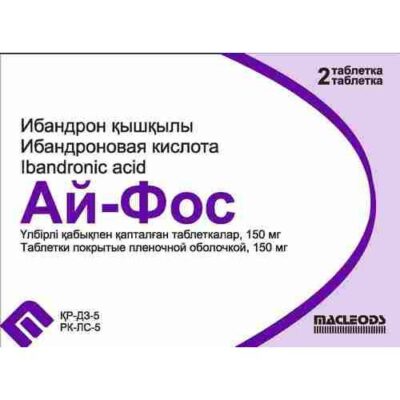
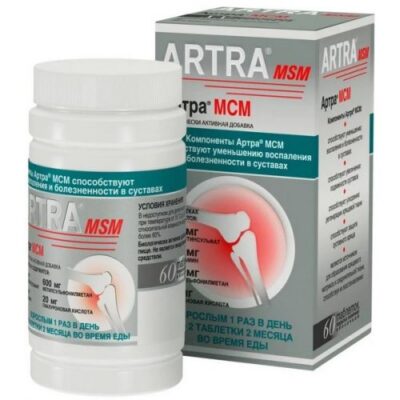
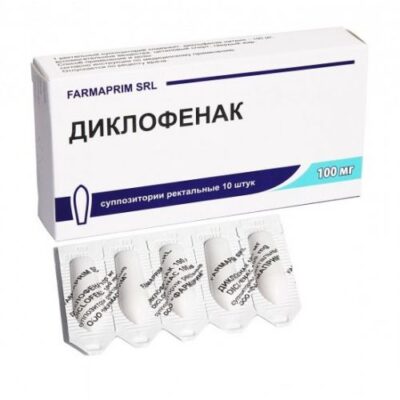
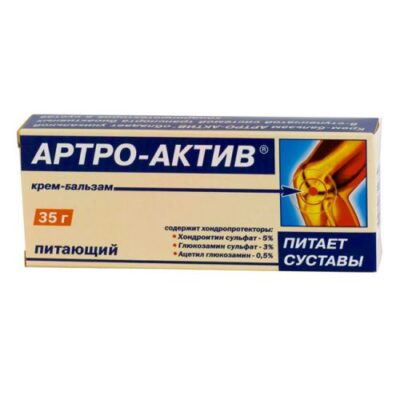
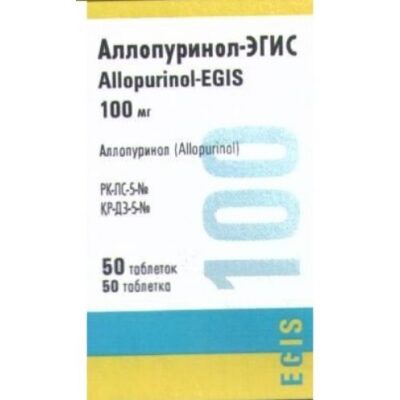
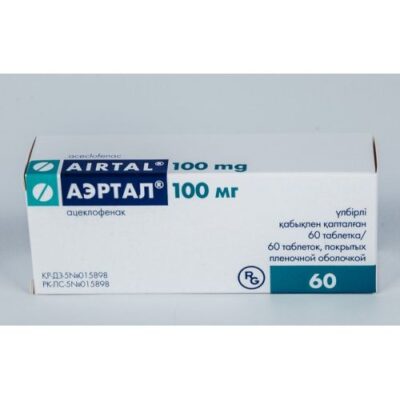
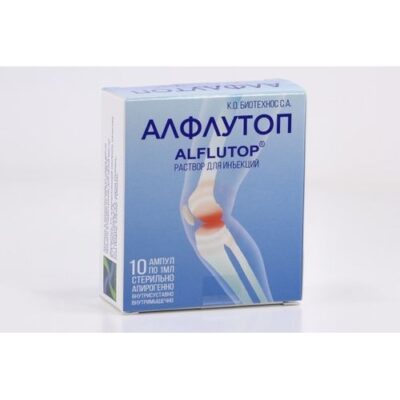
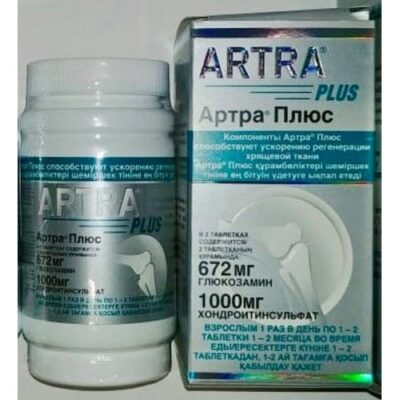
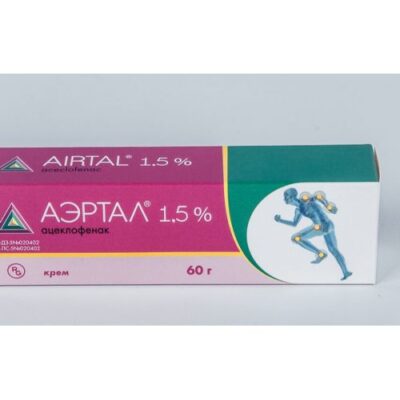
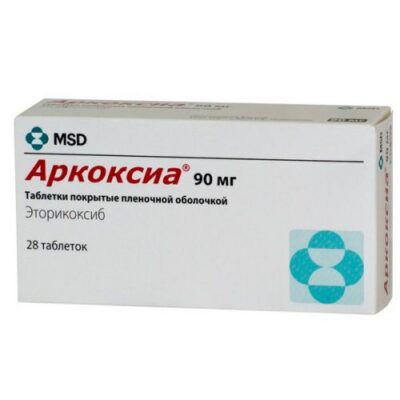






Reviews
There are no reviews yet.